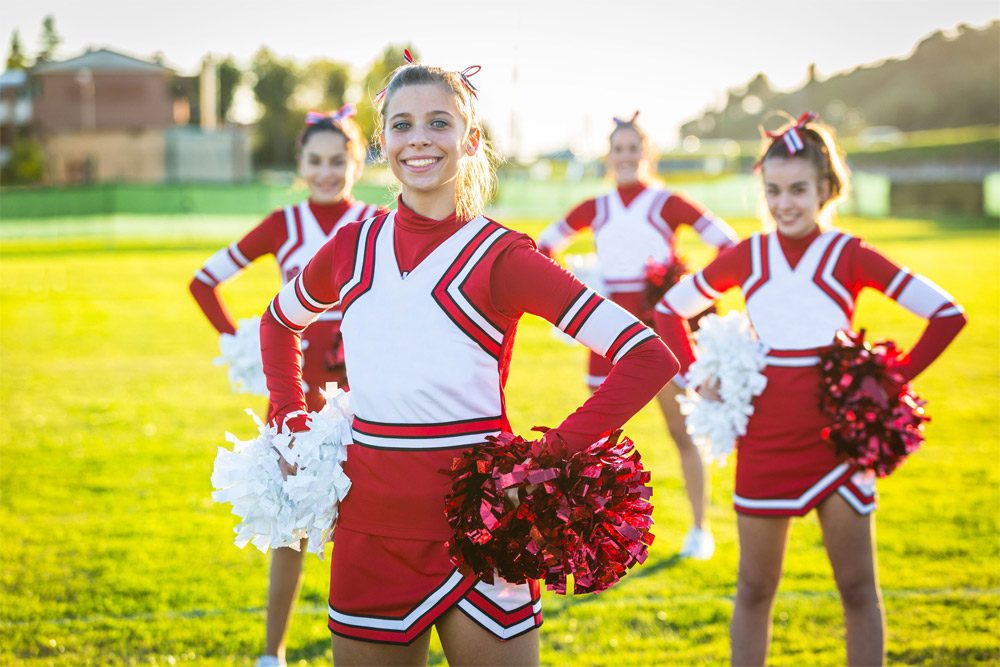
Cheerleading has evolved from leading the crowd in cheers at football games to a competitive, sport featuring acrobatic stunts performed by a group of athletes– and as a result the number and severity of injuries from cheerleading has also surged.
Cheerleading accounts for 66 percent of all catastrophic injuries in high school female athletes over the past 25 years. Risk factors for cheerleading injuries include previous injury, cheering on hard surfaces, higher body mass index, performing complicated stunts, and inadequate coaching. As in other sports, cheerleading injury rates increase with competition level and age.
The American Academy of Pediatrics (AAP) has made key recommendations for preventing injuries, including:
- Cheerleading should be designated as a sport in all states, allowing for benefits such as qualified coaches, better access to medical care and injury surveillance.
- All cheerleaders should have a pre-season physical, and access to qualified strength and conditioning coaches.
- Cheerleaders should be trained in all spotting techniques and only attempt stunts after demonstrating appropriate skill progression.
- Pyramid and partner stunts should be performed only on a spring/foam floor or grass/turf. Never perform stunts on hard, wet or uneven surfaces. Pyramids should not be more than 2 people high.
- Coaches, parents and athletes should have access to a written emergency plan.
- Any cheerleader suspected of having a head injury should be removed from practice or competition and not allowed to return until he or she has clearance from a health professional.
Fitness Routine of a CheerleaderThe target of a cheerleader’s fitness regime should be-conditioning, strength, flexibility and Joint range of motion.

- To begin with warm up for 5 min. Jog- 10 min, skipping- 10 min.
- Stretch the large muscles (Top 10 Everyday Must-do Stretches)- Hold stretch for 30 counts, do not bounce. It is important that you stretch every part of your body! Note: Stretches should never hurt.
- Weight training on alternate days will help build muscle strength and tone. Squats and lunges for leg strength, crunches and v-sit-ups for abdominals, push-ups for arms and chest. Dumbbells can be used building shoulder, bicep and tricep muscles. Depending on the condition of cheerleaders, you need to decide on how many sets of 10 reps they do. Start off easy and work into more sets.
- Wind up with cool-down and relax.
- Exercises and drills should be cut back or built up according to ones fitness level. For example, older cheerleaders would do more reps and would also want to add weight training and aerobics to their conditioning regimen.
- One hour of aerobics and conditioning is a fantastic way to train. Aerobics can be dance aerobics, step aerobics, running, jump lines with jogging in between, stations. Anything that gets the heart rate up to a training rate (roughly 16 beats per minute).
Most injuries are sprains and strains to the lower extremities, followed by head and neck injuries, so fitness needs to be a top priority.
Ref:
The American Academy of Pediatrics is an organization of 60,000 primary care pediatricians, pediatric medical subspecialists and pediatric surgical specialists dedicated to the health, safety and well-being of infants, children, adolescents and young adults. For more information, visit www.aap.org.